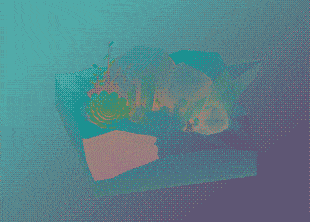Chinese physicists have applied machine learning methods to predict the success of experiments on single crystal growth based on selected conditions. The accuracy of the algorithm reached 81 percent, while the scientists themselves, on whose data the system was trained, correctly selected the conditions only in 36 percent of cases. The use of such a system will save researchers time and resources, the authors write in the journal Chinese Physics Letters.
The sloth robot taught to climb a web of ropes
Single crystals are macroscopic crystalline bodies whose structure represents a single continuous lattice. Such substances have special properties that are strongly dependent on the specific compound and the type of crystal lattice. Some have long found applications in technology (in particular, modern electronics largely depends on silicon monocrystals), while others are necessary for conducting modern scientific research in many fields, such as nonlinear optics and condensed matter physics. For example, to study the quantum Hall effect or Weyl semimetals, high-quality crystals are required.
macOS Catalina will use zsh instead of bash as the default shell
However, obtaining large single crystals, especially in the case of complex compounds, is extremely difficult, since the process of their growth depends on many factors, such as temperature, element ratios, substance flows, and much more. Extremely complex is the process of obtaining single crystals of ternary compounds, that is, consisting of three different chemical elements. This is due to the frequent absence of phase diagrams for such cases, that is, the dependences of the phases and compositions of the resulting compounds on the parameters.
Mozilla brings Firefox password management as a browser addon
Physicists under the leadership of Hong Ding from the Chinese Academy of Sciences decided to facilitate the work of the experimenters and created an automatic method that will allow them to determine in advance whether the desired crystal will grow under given conditions. To do this, they examined the growth of crystals of ternary compounds by the widely used solution-melt crystallization method and trained the machine learning system based on real experiments.
Tesla Pickup: this is all we know about Elon Musk’s next electric car
The authors used two sets of experimental data (649 and 115 experiments), and they featured 65 different chemical elements. The data included temperature curves of growth, elemental composition and ratios of initial reagents, as well as conditions for conducting experiments. The successful experiment was completed with the production of a single crystal, in the unsuccessful formation of the desired compound did not occur. 75 percent of the data was used for training, and the rest of the algorithms were tested.
At WWDC 2019, Apple introduces iPadOS, iOS 13 and new Mac Pro
The researchers used four machine learning methods: support vector machine (SVM) methods, decision tree, random forest, and gradient boosting decision trees. Each algorithm was independently tested and the decision tree was used to determine the most important parameters for growing this crystal, and SVM was used as a predictor – it was able to achieve a result of 81 percent on a test sample, while scientists selected suitable conditions only in 36 percent of experiments. The authors note that the use of such a technique can lead to significant savings in money, human resources and time.
BitTorrent clients: the 17 best applications to download torrents
“We used the model obtained by applying the decision tree to the training set to analyze important growth factors for single crystals. Based on this information, we used SVM to predict the success of crystal growth under given laboratory conditions, says co-author Yu-Jie Sun. “The accuracy of our approach will increase with the accumulation of experimental data for the training set.”
Physicists caught and reversed the quantum leap
Earlier, machine learning allowed us to draw people’s faces by voice, predict wages, find protoplanetary disks, and determine the magnetic field on the far side of the Sun. In general, we spoke about this approach to artificial intelligence in the ABC AI material: “Machine learning”.
2019 will be tough for smartphone manufacturers, especially Apple
